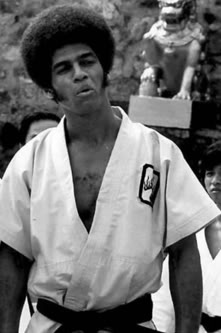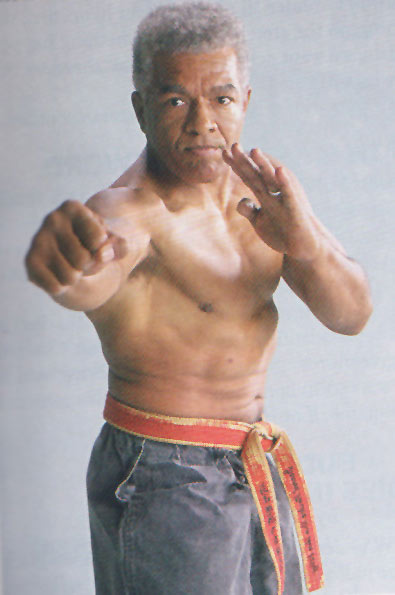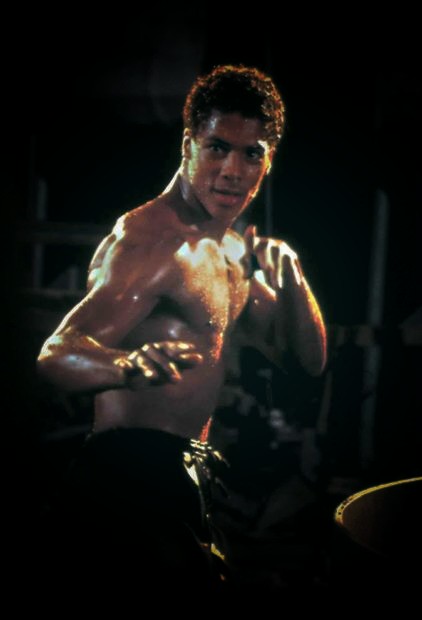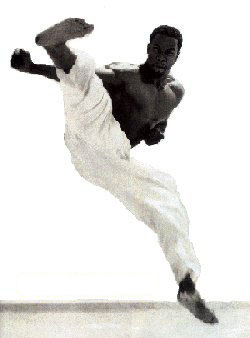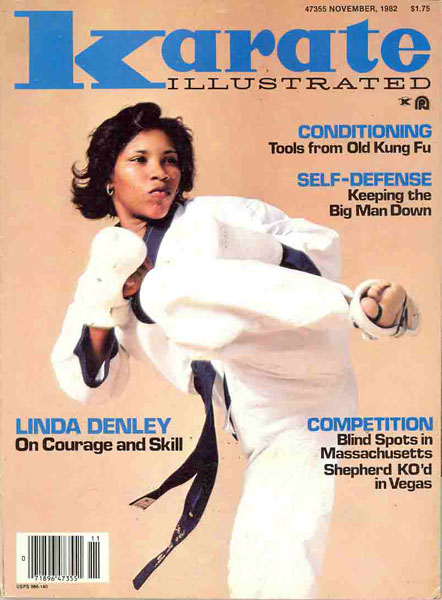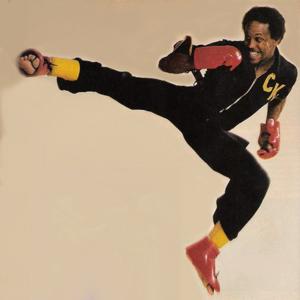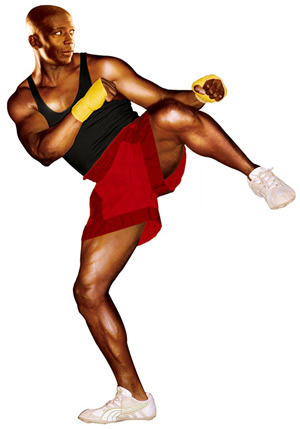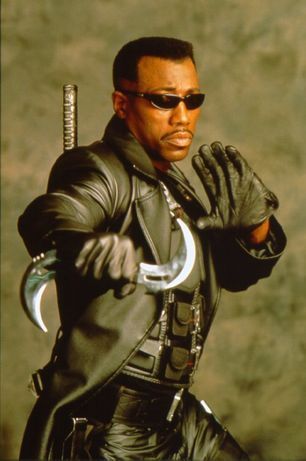 |
ICONS
Tribute to Black Martial Artists
Under Construction
To Donate to the Young Tiger Educational Fund Click Here
Please come back and visit for Summer updates.
Jim Kelly |
Kelly was born in Paris, Kentucky. He began his athletic career in high school, competing successfully in basketball, football, and track and field. He attended the University of Louisville where he played football, but left during his freshman year to begin studying Shorin-ryu karate. Additionally, he trained in Okinawa-te karate under the direction of Shihan Gordon Doversola. Kelly won the Huntington Beach Classic and credits Doversola with making him a world class fighter. During this time other notables as Joe Lewis would also train in the same dojo (martial arts school). After winning the middleweight title at the 1971 International Middleweight Karate Championship in Long Beach, he opened his own dojo. He taught karate to actor Calvin Lockhart for a role in a thriller feature film Melinda; he ended up playing a martial arts instructor in the movie. As an actor, Kelly is best known for co-starring alongside Bruce Lee in Enter the Dragon. This appearance led to starring roles in a string of martial arts-themed blaxploitation films, among them Melinda and Black Belt Jones. Most of Kelly's film roles played up the novelty of an African-American martial arts master.
|
Shidoshi Ron Van Clief
|
Grand Master Ron Van Clief has trained and taught Martial Arts well over 40 years. He has appeared internationally on television and radio demonstrating his art, as well as at many colleges and universities lecturing and presenting the Ron Van Clief 101 curriculum. He holds a black belt or the equivalent in Karate, Ju-Jitsu, Aiki-Jitsu, Kung-Fu, Arnis de Mano and Zen Jutsu. Further he is a master of the Sword, Sai, Nunchaku and other martial arts weapons. Grand Master Van Clief is a 10th Degree Red Belt and founder of the Chinese Goju System, with the title "Shidoshi". Ron Van Clief has established more than 25 schools in over 18 countries. He has starred, choreographed, appeared, or assumed roles as stunt man in more than forty motion pictures. He served as a policeman in New York and served several years as a United States Marine. Shidoshi Van Clief, is formerly commissioner of the World Contact Karate League. Ron Van Clief continues to bestow his knowledge with his remote instructors and students via seminars and through books and video. He has competed in more than 900 tournaments during forty years of international competition. He continues to compete in the "All American Annual Championships" held in New York, and most notable, he's a 5 times World Champion. In 1994 he fought in the Ultimate Fighting Championship IV, at the age of 51 against the undefeated Champion Joyce Gracie. Grandmaster Ron Van Clief competed in many brutal full contact matches in Asia to prove his systems effectiveness to the world of Martial Arts.. While living in the Caymen Island, he was the Chief Instructor for the Royal Cayman Island Police Department. In 1995, he was inducted into the World Martial Arts Hall Fame, with the Life Time Achievement Award. In 2002, he was inducted in the Black Belt Hall of Fame. |
Taimak
|
Taimak (pronounced Tie-Mock) Guarriello (born June 27, 1964) is a martial arts actor and stuntman, best known as Leroy Green in the 1985 martial arts film The Last Dragon. He was born in New York, to an African American mother, and an Italian father. Taimak got his first taste of martial arts at the age of 6 years old under the instruction of Master Gerald Orange, a Japanese Goju stylist. After the devorce of his mother and father, Taimak lived with his father in New York. He began studying Chinese Gojo with world renowned fighter and kung fu movie star Ron Van Clief. Taimak went on to win a New York State Kickboxing title and trained under Van Clief for the next ten years reaching the level of seventh degree Black Belt. At this time everyone was talking of the movie "The Last Dragon". Taimak's leading role in Berry Gordy’s The Last Dragon, in which he played Leroy Green, a Bruce Lee-inspired martial artist in search of "The Glow", was his first major break in acting. The film was a financial success and grossed more than $25 million at the box office. Since The Last Dragon, Taimak has appeared in a number of TV roles and over a dozen plays. Taimak later appeared in a number of TV roles and music videos including the lead male in Janet Jackson's "Let's Wait Awhile" music video, Debbie Allen's "Special Look" video. He played a date rapist on an episode of the TV show A Different World. He also appeared in 36 Crazyfists' music video "Bloodwork". Taimak has also worked with a number of celebrities including Madonna and starred in the play Cheaters, which toured the United States. He also starred in a hit Off-Broadway show in 2004 called Roadhouse The Comedy, based on the Patrick Swayze film Road House. In addition to his acting career, Taimak operates a gym on the Manhattan's East Side in New York city called Fitness Concepts, which he opened in 2002. |
Michael Jai White |
Michael Jai White (born November 10, 1967) is an American actor and martial artist who has appeared in numerous films and television series. He is the first African American to portray a major comic book superhero in a major motion picture, having starred as Al Simmons, the protagonist in the 1997 film Spawn. White appeared as Marcus Williams in the Tyler Perry films Why Did I Get Married? and Why Did I Get Married Too?, and currently stars as the character on the TBS comedy-drama television series Tyler Perry's For Better or Worse. White was born in Brooklyn, New York and moved as a teen to Bridgeport, Connecticut, where he graduated from Central High School in 1988. He is an accomplished martial artist, holding seven black belts in Shotokan, Tae Kwon Do, Kobudo, Goju Ryu with renowned Master Eddie Morales, Tang Soo Do, Wushu and Kyokushin, with a specific focus in Kyokushin (although his style incorporates aspects of many different martial arts forms). White started martial arts training at the age of eight. White is a former teacher. He cites his history in education as the reason why, despite his personal love for the music genre on "a lot of levels", he cannot "in good [conscience]" have a positive opinion on hip hop or "excuse some of [its] pervasive and destructive elements", due to his experience with youngsters who had difficulty seeing the difference between it and real life.
|
Linda Denley
|
American karate champion Linda Denley was born in Houston, Texas, one of 12 children. A natural athlete, she participated and excelled in many sports as a teenager. She decided to start studying martial arts in 1973 under Robert Torres in order to enhance her performance in other sports. In two years, she had her black belt in Tang Soo Do and was winning tournaments and teaching classes. While still in high school, Denley qualified for the Olympics in five track and field events, but was declared ineligible due to her professional winnings on the karate circuit. In 1979, she gave up an opportunity to play semi pro basketball for the Houston Angels because of her karate career. Known as the “Texas Terror”, Denley’s aggressive, hard-hitting style made her the most feared competitor in woman’s kumite. She was rated number one from 1973 to 1996; she fought for nine years before losing a match. During her career, Denley won the prestigious Battle of Atlanta 11 times, The Diamond Nationals three times, The U.S. Open nine times, The Long Beach Internationals four times and the U.S. Capital Classic nine times. Denley has been named “Competitor of the year” by several Hall of Fame organizations including Mars Hall of Fame (1988). NASKA Hall of Fame (1994) and the Diamond National Hall of Fame (1989). She was the first female to be inducted into the Black Belt Hall of Fame (1980) and was the PKL and Kick Illustrated “Competitor of the Year” in 1982 and the Women’s Karate Championship for many years. The Amateur Organization of Karate recognized her as the 1999 “Instructor of the Year”. The same organization recognized her in 2002 as the only true living legend in the Martial Arts. In 1988, she joined the Atlanta World Professional Karate Team. She traveled the globe to compete and was one of the greatest female fighters of all times. She graced the covers of numerous martial arts magazines and was featured in local newspaper articles and T.V. programs. She worked with Jackie Chan in Armour of God and with Chuck Norris in Sidekicks. Norris even grabbed her for a role in the 1995 Christmas episode of Walker, Texas Ranger. Denley holds a 6th dan in Tang Soo Do and is the owner of the Texas Black Belt Academy in Houston. She is especially proud of teaching her kids and makes sure they learn respect, good sportsmanship and pride in everything they do and learn to say no when confronted with drugs. She wants her kids to become “black belts” not only in the martial arts but also in their schoolwork, in their church and in every day living. Denley is on a quest to help her students to be their best at whatever they do. Besides teaching full time, Denley is still giving seminars around the country and promotes her annual Space City Open Karate Championships in Houston. |
Steve The Nasty Anderson
|
Mr. Steve Anderson is widely known as the greatest sport karate fighter of all time. From 1980 until 1993 Mr. Anderson won more sport karate tournament titles and grand championships than anyone in the history of sport karate. In fact, over a 12 month period between 1984 and 1985 Mr. Anderson dominated the NASKA circuit to such an extent that he went the entire year without a single loss in the semi-contact division -- this is after fighting in tournaments across North America virtually every weekend. In the late 1980’s Mr. Steve Anderson moved up to Ottawa, Canada to open a school and start his own martial arts system. Over the years Mr. Anderson has trained and produced dozens of highly successful martial artists including the WKA president Ben Stewart. Mr. Anderson is an expert in most stand-up fighting arts and was a successful All-American collegiate wrestler. He is a 4-time WAKO world champion and the only competitor ever to defend his WAKO title back-to-back 4 times. During his competition career Mr. Anderson competed in upwards of 50 tournaments per year over a span of many years and was present as a competitor, coach, referee or promoter at more martial arts tournaments than anyone in the history of sport karate. His wealth of knowledge in the areas of competing, coaching, promoting and refereeing will undoubtedly give the added “punch” that WKA Canada needs to raise our team to the #1 country status we enjoyed a few years ago. Mr. Steve Anderson currently owns and operates World Champion Steve Anderson Karate in Ottawa, Canada and conducts seminars all over the world on kickboxing and karate. His training DVD collection will be available at all WKA Canada circuit events. Mr. Anderson is looking forward to working one-on-one with as many members of Team Canada as possible. Not only is he gifted at imparting the skills necessary to win in competition but he will show our young athletes how to have the success mindset that all champions must possess. |
Billy Blanks |
Blanks began his study of the martial arts at the age of eleven and practices Karate and Taekwondo. He was born with an anomaly in his hip joints that impaired his movement, and a clumsiness that earned him the taunts of his siblings and caused his coaches to believe he’d never accomplish much. Billy found the answer to these challenges in karate. When he saw martial arts great Bruce Lee on TV, he decided he wanted to be a world martial-arts champion. The discipline of the program began to transform his body. Blanks began his acting career in the 1980s where he starred in several unsuccessful action-adventure feature films. He was hired to act as a bodyguard for lead actress Catherine Bach during the filming of Driving Force, due to the political unrest present in Manila at the time; he impressed the producers so much, they wrote him into the script. In the late 1980s, Blanks invented the Tae Bo workout, while running a karate studio in Quincy, Massachusetts. He used components of his martial arts and boxing training. The name is a portmanteau of tae kwon do and boxing. Blanks opened a fitness center in Los Angeles to teach his new workout. He later attracted some celebrity clients such as Paula Abdul and the popularity of the workout quickly grew, becoming a pop culture phenomenon after Blanks began releasing mass-marketed videos.
|
Wesley Snipes |
Wesley Trent Snipes (born July 31, 1962) is an American actor, film producer, and martial artist, who has starred in numerous films, thrillers, and dramatic feature films. Snipes is known for playing the Marvel Comics character Blade in the Blade film trilogy, among various other high profile roles. Snipes formed a production company, Amen-Ra Films, in 1991 and a subsidiary, Black Dot Media, to develop projects for film and television. Snipes has been training in martial arts since age 12, earning a high ranking 5th dan black belt in Shotokan Karate and 2nd dan black belt in Hapkido. He has also trained as a student of Capoeira under Mestre Jelon Vieira and in a number of other disciplines including various styles of kung fu and Brazilian Jiu Jitsu.
|
Bruce Lee
|
Bruce Lee (Lee Hsiao Lung), was born in San Fransisco in November 1940 the son of a famous Chinese opera singer. Bruce moved to Hong Kong when he soon became a child star in the growing Eastern film industry. His first film was called The birth of Mankind, his last film which was uncompleted at the time of his death in 1973 was called Game of Death. Bruce was a loner and was constantly getting himself into fights, with this in mind he looked towards Kung Fu as a way of disciplining himself. The famous Yip Men taught Bruce his basic skills, but it was not long before he was mastering the master. Yip Men was acknowledged to be one of the greatest authorities on the subject of Wing Chun a branch of the Chinese Martial Arts. Bruce mastered this before progressing to his own style of Jeet Kune Do. At the age of 19 Bruce left Hong Kong to study for a degree in philosophy at the University of Washington in America. It was at this time that he took on a waiter's job and also began to teach some of his skills to students who would pay. Some of the Japanese schools in the Seattle area tried to force Bruce out, and there was many confrontations and duels fought for Bruce to remain. He met his wife Linda at the University he was studying. His Martial Arts school flourished and he soon graduated. He gained some small roles in Hollywood films - Marlowe- etc, and some major stars were begging to be students of the Little Dragon. James Coburn, Steve McQueen and Lee Marvin to name but a few. He regularly gave displays at exhibitions, and it was during one of these exhibitions that he was spotted by a producer and signed up to do The Green Hornet series. The series was quite successful in the States - but was a huge hit in Hong Kong. Bruce visited Hong Kong in 1968 and he was overwhelmed by the attention he received from the people he had left. He once said on a radio program if the price was right he would do a movie for the Chinese audiences. He returned to the States and completed some episodes of Longstreet. He began writing his book on Jeet Kune Do at roughly the same time. Back in Hong Kong producers were desperate to sign Bruce for a Martial Arts film, and it was Raymond Chow the head of Golden Harvest who produced The Big Boss. The rest as they say is history. |
Soke Kuniba
|
Shōgō Kuniba, February 5, 1935 - July 14, 1992) aka Sōke Kuniba was a Japanese teacher of karate. His adoptive father (biological uncle) was Kōsei Kokuba (Kuniba), who began training him at five years old. Kuniba Sōke was taught by many masters of the day including:
Sōke Kuniba is known for integrating the power of karate with the sensitivity of aikido and other traditional martial arts, in a style he called "Motobu-ha Shito-ryu." This style is structured to adopt concepts and techniques from other styles to form a modern system replete with traditional values, but with an open=minded philosophy. Shogo Kuniba was the Shodai Soke of Motobu-ha Shito-ryu Karate-do. It is sometimes referred to as Kuniba-ha Karate-do. A book titled A Primer of Kuniba-ha Karate-do: The Style of Shogo Kuniba was written and published in 1985 by Shihan James Herndon; it was republished in 2009. Kuniba applied his knowledge of aikido, jujutsu, judo and other arts to the bunkai of karate kata. This made for very creative variations on techniques, which became his hallmark. He created a new style, Kuniba-ryū Goshindō (aka Goshin Budō Jujutsu), which literally means Kuniba Sōke's style of self defense. Kuniba-ryū Goshindō combines elements of karate, aikido and judo. There are also several other Goshindō/Goshin Budō/Goshinbudō systems which do not came from Kuniba, so it is most proper to always state the full name as "Kuniba-ryū Goshinbudō/Kuniba-ryū Goshindō" in order not to confuse Kuniba sensei's Goshinbudō/Goshindō with other Goshinbudō/Goshindō styles. (See: Goshinbudo, for examples of self-defense systems using the same name but not related to Sōke Kuniba's Goshinbudō). In Japan, Shōgō Kuniba was treated as a Meijin (brilliant man). When Kuniba Sōke died on July 14, 1992, the organizations he had led split over disagreement of leadership. Kunio Tatsuno became Sōke of Motobu-Ha Karate-dō and Kaicho of Seishinkai. In the U.S., Kuniba Sōke named William H. Price as second Sōke of both Kuniba-ryu Karate-Do and Kuniba-ryū Goshindō on March 16, 1992. Several American karateka under Kuniba Sōke followed his named U.S. successor. Chikubu-Kai was created on September 8, 1995, to continue his teachings. However, upon the death of Kunio Tatsuno, Kuniba-Kai was established in Japan by the Kuniba family in 1999. Many Shihan loyal to Kuniba have affiliated with Kuniba-Kai, headed by Kozo Kuniba and Kosuke Kuniba. The style is called Kuniba-ryu Karate-Do in the U.S. and Motobu-Ha Shitō-ryū in Japan. Today, the Seishinkai (the Karate organization originally started by Kosei Kokuba) still exists to promote Shitō-ryū (however, the term "Motobu-Ha" is no longer claimed). A new International Seishinkai Karate-dō Union (ISKU) was formed by Kunio Tatsuno in 1999; in 2007, Sadatomu Harada formed the Seishinkai International Shitoryu Karate-dō Union (SISKU). Neither ISKU nor SISKU claim Motobu-Ha. Kuniba-Kai has exclusive rights to that style per the Japan Karate Federation (JKF). A famous quote, by Soke Shōgō Kuniba, states, "Seven Times Down, Eight Times Up!". |
Kenwa Mabuni
|
Born in Shuri on Okinawa in 1889, Mabuni Sensei was a descendant of the famous Onigusukini Samurai family. Perhaps because of his weak constitution, he began his instruction in his home town in the art of Shuri-Te (首里手) at the age of 13, under the tutelage of the legendary Ankō Yasutsune Itosu (糸州安恒) (1831-1915). He trained diligently for several years, learning many kata from this great master. It was Itosu who first developed the Pinan kata, which were most probably derived from the 'Kusanku' form. One of his close friends, Sensei Chōjun Miyagi (宮城長順) (founder of Gōjū-ryū) introduced Mabuni to another great of that period, Sensei Higaonna Kanryō (東恩納寛量), and began to learn Naha-Te (那覇手) under him as well. While both Itosu and Higashionna taught a 'hard-soft' style of Okinawan 'Te', their methods and emphases were quite distinct: the Itosu syllabus included straight and powerful techniques as exemplified in the Naifanchi and Bassai kata; the Higashionna syllabus, on the other hand, stressed circular motion and shorter fighting methods as seen in the popular Seipai and Kururunfa forms. Shitō-ryū focuses on both hard and soft techniques to this day. Although he remained true to the teachings of these two great masters, Mabuni sought instruction from a number of other teachers; including Seishō Aragaki, Tawada Shimboku, Sueyoshi Jino and Wu Xianhui (a Chinese master known as Go-Kenki). In fact, Mabuni was legendary for his encyclopaedic knowledge of kata and their bunkai applications. By the 1920s, he was regarded as the foremost authority on Okinawan kata and their history and was much sought after as a teacher by his contemporaries. There is even some evidence that his expertise was sought out in China, as well as Okinawa and mainland Japan. As a police officer, he taught local law enforcement officers and at the behest of his teacher Itosu, began instruction in the various grammar schools in Shuri and Naha. |
Sifu Gorden Lu |
Lu (Lo), Gorden, son of Sifu Lo Man Kam, also inherited the Wing Chun tradition from his family, and grew up regarding the propagation of Wing Chun as his life’s mission. These individuals exerted great efforts in promoting Wing Chun Kung Fu, also conducting seminars and attracting students in many countries around the planet. When Sifu Gorden was a child, he was exposed to his father’s frequent discussion of Wing Chun techniques with the students. Thus, he grew up aware of the power of Wing Chun in hitting fast and with deadly accuracy in a short distance. He was amazed when he witnessed the skillful technique and the change of footwork in the seniors’ practice. Sifu Lo determined to master Wing Chun, and he accomplished this with the assistance of his father and the encouragement and the guidance of his seniors. Growing up at Kung Fu Federation, Sifu Lo was strongly influenced by his family. He began learning Wing Chun formally at the age of 15. He was attentive and concentrated intently in order to master the system. Ultimately, he developed a deep understanding of Wing Chun. Though he had already honed his Wing Chun skills, Sifu Lo practiced diligently with his father’s students from the age of 18. In 1994, Sifu Lo moved to the United States to further his learning with Sifu Leung Shiu Hung (Duncan Leung). Sifu Leung was a private student of Sifu Yip Man. His skill of Ba Zam Do (Wing Chun Knife) is outstanding. Although his training in the United States was extremely rigorous, Sifu Lo studied hard and practiced diligently under the enlightened eye of Sifu Leung. This rare opportunity made it possible for Sifu Lo attain unique skill in Wing Chun. |
Sifu Duncan Leung |
SiFu Duncan Leung is a disciple of the Wing Chun Grand Master Yip Man, and a former classmate of Bruce Lee. He has been teaching Wing Chun in the United States for more than twenty years. This included teaching the United States FBI, the Navy Seals, and various Police Institutions. SiFu Leung is currently available for private lessons on an appointment basis only. His unique training methods provide the students with a proper understanding and instruction in the art of Wing Chun Kung Fu. His training methods also allow his students to gain better fighting skills through the use of Wing Chun in real fighting situations. It is in this same spirit of instructing that SiFu has made 5 Videos. The Videos are designed to teach the principles of 1st and 2nd Forms, Chi Sau, Trapping Hands and Training Drills and Wooden Man. They are personally narrated by SiFu. They also includes his comments on various fighting techniques.
|
Sifu Ip Man
|
Yip Man (葉問) [October 1893 - December 2, 1972] was the first martial arts master to teach the Chinese martial art of Wing Chun openly. He had several students who later became martial arts teachers in their own right, including Leung Sheung, Lok Yiu, Chu Shong Tin, Wong Shun Leung and Bruce Lee. |
Sifu Lo Man |
The nephew of Grandmaster Yip Man, Sifu Lo Man Kam began learning Wing Chun Kung Fu from his uncle at a very early age. To this day, he still progresses in Wing Chun, continually seeking to expand an already profound understanding of his art. Using his vast knowledge of martial arts, he has integrated Wing Chun’s proactive approach with joint locking and throwing skills to form the foundation of the Taiwan police martial art curriculum. He has further extended Wing Chun's philosophies and theories to apply to everyday life.
In 1974, Sifu Lo Man Kam established the first and only Wing Chun Kung Fu school in Taiwan. Distinguished as an unparalleled teacher, he has helped spread the Chinese fighting arts throughout the world. His school resembles a United Nations of Kung Fu, with students from 34 countries and territories: including Switzerland, Germany, the USA, France, Israel, Canada, Poland, Belgium, South Africa, Saudi Arabia, Turkey, Thailand, Hong Kong, and many others. Through his efforts, he has shared this aspect of Chinese culture, and has become something of a cultural ambassador for the Chinese people. Of course, Wing Chun is well known in martial arts circles as Superstar Bruce Lee's first fighting style. In fact, Sifu Lo was the giant's third senior kung fu brother in Hong Kong, and perhaps it is also this fact that draws so many foreigners to his school to join the Chinese who train there. |
All Photography and Graphics copyrights of Cordy Studio 2011. All rights reserved. |
Contact | Address | email | last updated on: 03/06/2013 |
